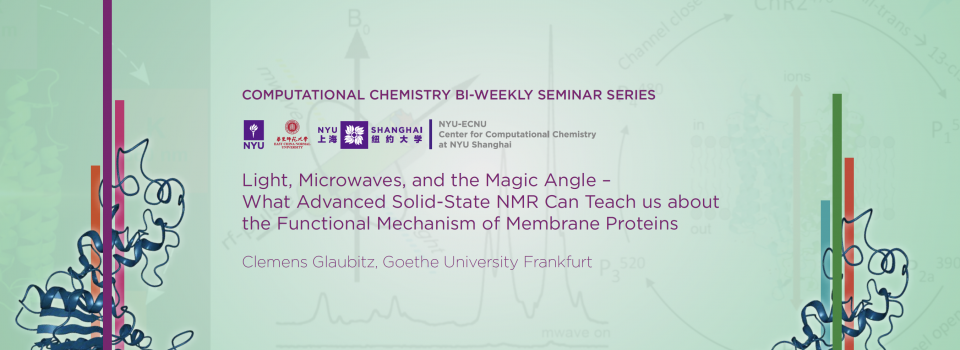
Abstract:
The advancement in structural biology of membrane proteins mainly due to crystallography but also increasingly due to cryo-EM has created a great demand and offers also the opportunity of in-depth spectroscopic studies for resolving their functional mechanisms. Solid-state NMR offers great opportunities as the protein can be studied within a membrane environment and the method offers a promising interface with computational approaches. This lecture will illustrate key advancements in solid-state NMR, such as dynamic nuclear polarisation, on the basis of recent applications to microbial rhodopsins. Proteins of this large and important family share a common molecular architecture with 7 transmembrane helices and a retinal cofactor. This structural motif encodes an array of functions ranging from light sensing via ion channels to ion pumps. They undergo a photocycle with distinct intermediate states. Understanding their molecular properties holds the key for elucidating the origins of the diverse functions fulfilled by these proteins. Our methodological approach has been extended to G-protein coupled receptors, which are major drug targets. It will be demonstrated how agonist binding modes can be resolved by solid-state NMR.
Biography:
Clemens Glaubitz, Professor of Chemistry, Biochemistry and Pharmacology at University of Frankfurt, Germany. He obtained his Ph.D. degree from University of Oxford in 1998 (Prof. Anthony Watts). After postdoctoral work at University of Oxford (1998-2000, Prof. Anthony Watts) and Stockholm University (2000-2001, Professor Malcolm Levitt), he became a tenured professor at University of Frankfurt since 2002. His major research interests focus on the structure and function of membrane proteins (especially for rhodopsins, G-protein-coupled receptors, ABC transporters, secondary transporters and membrane proteins), membrane protein dynamics and membrane protein-drug interactions, solid-state nuclear magnetic resonance, and dynamic nuclear polarization methods.
Bi-Weekly Seminar Series by the NYU-ECNU Center for Computational Chemistry at NYU Shanghai


